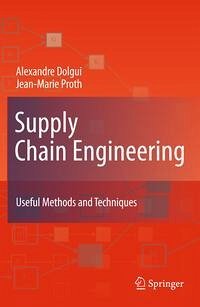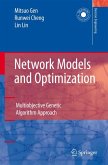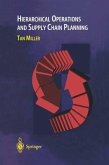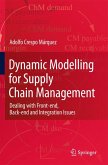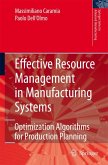Several POM challenges are answered through a comprehensive analysis of concepts and models that assist the selection of outsourcing strategies and dynamic pricing policies. The ramifications of these topics are discussed from local to global perspectives.
Supply Chain Engineering also presents
- inventory control policies,
- radio frequency identification (RFID) technologies,
- flexible and re-configurable manufacturing systems,
- real-time assignment and scheduling methods,
- new warehousing techniques.
In addition, a significant part of the book is devoted to: lean manufacturing, line balancing (assembly lines, U-lines, and bucket brigades), and dynamic facilities layout approaches.
Explanations are given using basic examples and detailed algorithms, while discarding complex and unnecessary theoretical minutiae. Moreover, all the examples have been carefully selected with a view to eventual industrial application.
Supply Chain Engineering is written for students and professors in industrial and systems engineering, management science, operations management, and business. It is also an informative reference for industrial managers looking to improve the efficiency and effectiveness of their production systems.
Dieser Download kann aus rechtlichen Gründen nur mit Rechnungsadresse in A, B, BG, CY, CZ, D, DK, EW, E, FIN, F, GR, HR, H, IRL, I, LT, L, LR, M, NL, PL, P, R, S, SLO, SK ausgeliefert werden.
When I read and evaluated this book as a candidate for our students in the course Design and Control of Production and Manufacturing Systems this year, for both graduate and advanced undergraduate students, I needed to answer this question: What is the strongest attribute of this new book? Throughout the pages I found the answer (and ended up recommending it): These authors, both experts in the theory of supply chain engineering and innovators of algorithms and methods themselves, have been able to contain their deep knowledge of complex theory by understanding what industry truly needs, and have indeed presented it at the right level. There are still plenty of advanced and rigorous algorithms and techniques besides the concise summaries of advanced material and simpler solution approaches; hence, the more mathematical and the less analytical students, researchers, engineering practitioners and designers, managers and consultants will find relevant and necessary knowledge for success with their supply chains."
Prof. Shimon Y. Nof, Production Planning & Control: The Management ofOperations, Francis & Taylor, 04 Jan 2012
"This book contributes to lessen the gap between academic methods and business activities by providing simple and systematic methods for a series of supply chain problems faced by real world decision makers and managers. The book accomplishes a triple objective for the reader: to provide the basic concepts and representation models for identified problems, to provide an actual view of businesses and to provide practical strategies to include market, competition and external context issues in management decisions."
"The book will be certainly useful both for managers and the academic community, since students can use it for understanding how theory and conceptual solutions are applied in real life, and for practitioners who will find in this book a practical guide for application of modern methods to real-life problems."
Prof. Susana Relvas, European Journal of Operational Research, Elsevier, vol. 211, 2011, pp. 216-217
"The book chapters address, in parallel presentations, various aspects of supply chain engineering and management. In each chapter, the terminology is explained first, then the well established results reported in the literature are reviewed to "set the stage" for presentation of new results. In most cases the presentation of methods and technologies is illustrated with real-life examples."
"The book, which is written by the right authors, came at the right time to help the managers and other knowledge workers of the industrial organisations to become familiar with useful, usable and utilized methodologies and technologies which can contribute to improving the performance of theenterprise. At the same time, the work can be viewed as pointer to a very promising research direction for the academia people and researchers from system and industrial engineering. Consultants and software companies may get new inspiring ideas from this book."
Acad. Florin Gheorghe Filip, Studies in Informatics and Control, vol. 20, n° 3, 2011

